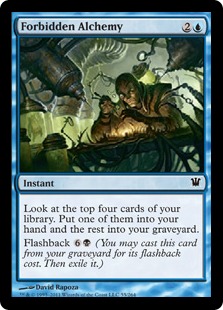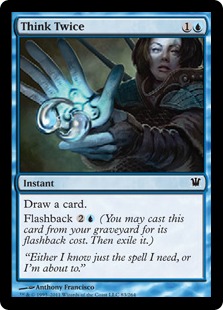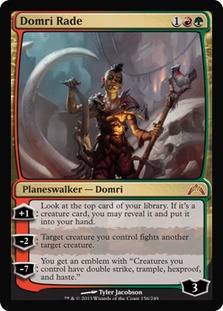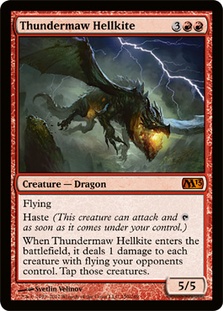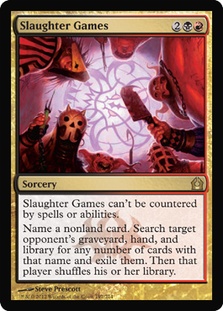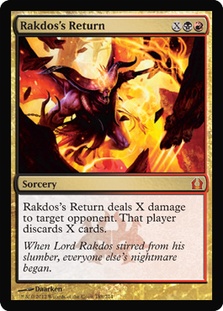Hello and welcome back!
I don’t often get a chance to attend SCG Open Series, so it is always a treat when my schedule allows me to make it out to one. In particular, I really enjoy the "Iron Man" tournament atmosphere where if one plays both the Legacy and Standard Opens they get to play nineteen rounds of tournament Magic in 36 hours. If one considers that each match of Magic is 2.5 games, then an Open Series weekend equates to roughly 50 games of tournament Magic in a day and a half!
My favorite thing about getting to play a ton of tournament matches is that one inevitably learns a ton about the formats they are playing. In today’s article, I am going to share what I learned over the past weekend. In particular, I will be discussing what I learned about Esper Control after playing ten rounds with it.
I ended up with an 8-2 record with my build of Esper Control, which was good for a 31st place out of almost 700 players. Here is my list:
Creatures (5)
Planeswalkers (5)
Lands (26)
Spells (24)

I stumbled onto Esper last Wednesday night during playtesting when D. J. Kastner brought up a variant of the deck that he and Jason Terry (who got ninth on breakers at the Open) had been working on. I got a chance to play quite a few games with the deck against the various midrange decks people were testing out and quickly realized that Esper absolute crushes most of the U/W/R midrange decks.
I felt U/W/R Reckoner decks and other midrange strategies were likely to be popular and that having a good matchup against these types of decks was a good place to be. One thing that I noticed from the Standard testing I was able to do was that Boros Reckoner is an extremely important and problematic card in any matchup involving red cards. One of the most appealing aspects of playing Esper is that Boros Reckoner isn’t nearly as big of a deal for it as he is for almost every other deck in the format.
If Reckoner is one of the best cards in the format, it stands to reason that many people will play with it, and if one anticipates a lot of people will play Reckoner, it is very likely that simply playing a deck that doesn’t care about the card is a good choice.
You might have noticed that my list is a little bit different from other well-known Esper lists, and there is a good reason for that. I went to the event with a couple of friends from Michigan, and when we got into Cincinnati, I tested approximately 30+ games of Esper Control versus Max McVety (Top 8 at the Open) and his Boros deck.
I felt that the traditional builds of the deck really struggled against aggressive red decks, especially on the draw. Since I already felt very confident against midrange decks, I was willing to shave some percentage there in order to get better against fast rush decks. I felt cards like Forbidden Alchemy and Jace were too clunky and were routinely costing me games.
"In this fast paced world of Ash Zealots and Flinthoof Boars, who has time for a three-mana cantrip?"
One thing I learned when testing Esper versus Boros was that any game where you have to cast Forbidden Alchemy on turn 3, you almost always die. I found that I needed to interact with fast decks on every single turn for the first five turns of the game in order to not take too much damage. If this is the case, then the soonest one would even realistically be able to play Alchemy is on turn 5 with another two-drop!
"A cantrip for all good mana curves."
Think Twice solved this problem nicely as I could play it on turn 4 with another two-drop and then again on turn 5 by flashing it back. Also, since the deck has so many redundant types of effects, the card selection offered by Forbidden Alchemy tends to be worse than the efficient card advantage of Think Twice.
Basically, every game I wanted to play a two-drop on the second turn and a two-drop on the third turn with a Ravnica shockland tapped. I had a few exceptions to the rule of two-drops (I can’t help it that Lingering Souls, the best B/W card ever printed, costs three mana to hard cast), but for the most part I wanted to interact early and often.
Here’s how my rounds went with Esper Control at SCG Standard Open: Cincinnati:
Naya Midrange, 1-2 Loss
Esper Control, 2-0 Win
Boros, 2-0 Win
Naya Humans, 2-1 Win
Bant Control, 0-2 Loss
Jund Midrange, 2-1 Win
Mono Red, 2-0 Win
U/W/R Midrange, 2-1 Win
Mono Red, 2-0 Win
In ten rounds of Constructed Magic, I played against nine different decks! Honestly, I can’t remember the last time there were so many different viable decks being played in Standard at the same time. It is really a testament to Magic design being fantastic at this point in time.
I was really happy with the way this deck turned out and felt that all of my testing and preparation really paid off in providing me with a quality product. I was a little bit disappointed that I lost twice and failed to make Top 8 with a deck that I thought was very strong, but overall I really enjoyed playing the deck and would likely play it again in a future tournament.
I did learn a few things while playing the deck that make me want to retool it a little bit. In particular, I didn’t feel that the deck was particularly weak to any specific strategy I encountered. Most of the decks in the format were either aggressive creature decks or midrangey creature decks, which are both favorable for Esper. While the deck wasn’t weak to any specific strategy, I did find that there were certain cards that were particularly problematic for me to deal with.
"This card is emblematic of what bugs Esper mages."
I didn’t really get a chance to play with or against Domri Rade prior to the tournament, but if I had, I would have made some adjustments. It is a huge problem if it comes down early because Esper has very few ways to actually kill it. My version was even weaker to it because I abandoned Detention Sphere and Oblivion Ring in favor of keeping my instant/sorcery count high for my Augur of Bolas (also, I still don’t like 3CC).
The problem is that it comes down and starts drawing them cards, which is annoying but fine. It’s basically a little Jace, which is already pretty insane against control decks. The problem is that unlike Jace Beleren’s ultimate, which is kind of "meh," Domri’s ultimate is straight up unbeatable for an Esper deck.
Why is Celestial Purge not in this format!?
The best answers to Domri Rade:
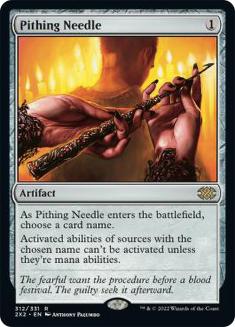
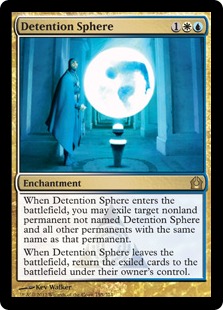
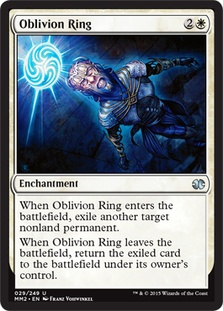
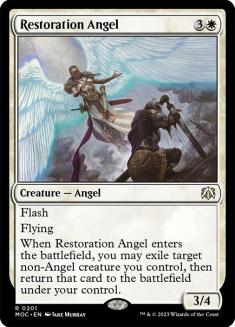
"Possible answers R/G Baby Jace"
"Leeeeeeroy Jeeenkins!!!"
Obviously, Thundermaw Hellkite is a card that Esper decks really don’t want to play against. It mows down Lingering Souls and can wipe out one of our freshly played planeswalkers from out of nowhere.
The play that I was always most afraid of was that I would play a Sorin or a Tamiyo and plus it up into a seemingly safe board, only for it to get killed by a TMH. Hellkite also eats large chunks of damage, which is something to worry about after tapping out for a Supreme Verdict.
"Quit playin’ games with my Supreme Verdicts."
I definitely lost a game to getting Supreme Verdict Slaughter Games’d out of my hand and then not being able to deal with Jund’s high quality creatures. Slaughter Games is a card that I believe is a lot better than the amount of play it actually sees. It is really hard for Esper to beat controlling midrange decks without Verdict or Revelation, so be wary.
I was much more worried about my Verdicts getting Slaughtered away than even my Revelations, so perhaps playing some number of Terminus or Planar Cleansing is a possible answer to this question. I noticed Ben Stark had Planar Cleansing in his Pro Tour Esper deck.
"I had a Revelation, but I lost it."
It’s pretty self-explanatory why a deck that is all spells would struggle with beating a Duress. The ability to pluck away an important Revelation or Verdict at the right moment can easily steal games away.
"There was a time Mind Twist was banned in Vintage…"
Against a control deck, there are few things as effective as making them discard all of their hard-earned card advantage while also blowing up their planeswalker. Against Jund, especially in the first game, the only card I am ever worried about is Rakdos’s Return.
I think that the value of counterspells is at an all-time high right now, especially with Cavern of Souls seeing less play than it should because people love their Gatecrash dual land mana bases. Also, with more midrange and control decks being played and doing well, permission is the best possible thing. If people start playing more Syncopates to kill Esper’s planeswalkers and Revelations, it certainly makes Jund’s Rakdos’s Returns lose a lot of value in the near future.
My advice moving forward with Esper:
Don’t get too caught up in control arms wars and lose sight of what makes a control deck like Esper so good: the fact that it ought to beat creature decks, which are the most played decks in the format.
I think that it might also be wise to add another counterspell to the maindeck since people are not playing Cavern of Souls as much as they should.
Rest in Peace in the sideboard is a great way to help even up the Reanimator matchup. I played more Purify the Grave because Augur of Bolas can find it, but the quality of RIP cannot be denied. Suck it up and play the proper amount of graveyard hate!
I think that some way of efficiently dealing with planeswalkers is going to be very necessary moving forward. There are lots of ways; just makes sure that you have some. It is my thought that as Standard continues to slow down as the format becomes more established that planeswalkers are going to not only become better in general but will see a lot more play.
Standard has really impressed me with what an open and diverse format it has turned out to be. If you are looking for a fun and resilient deck to play at your next event, you should consider playing Esper. Or, at the very least, make sure you are prepared to deal with it!
Standard? Ten rounds. Legacy? Nine rounds. Next stop? Gatecrash Sealed at Grand Prix Charlotte, where I will see many of you guys next weekend.
Thanks for reading.
Cheers,
Brian DeMars

